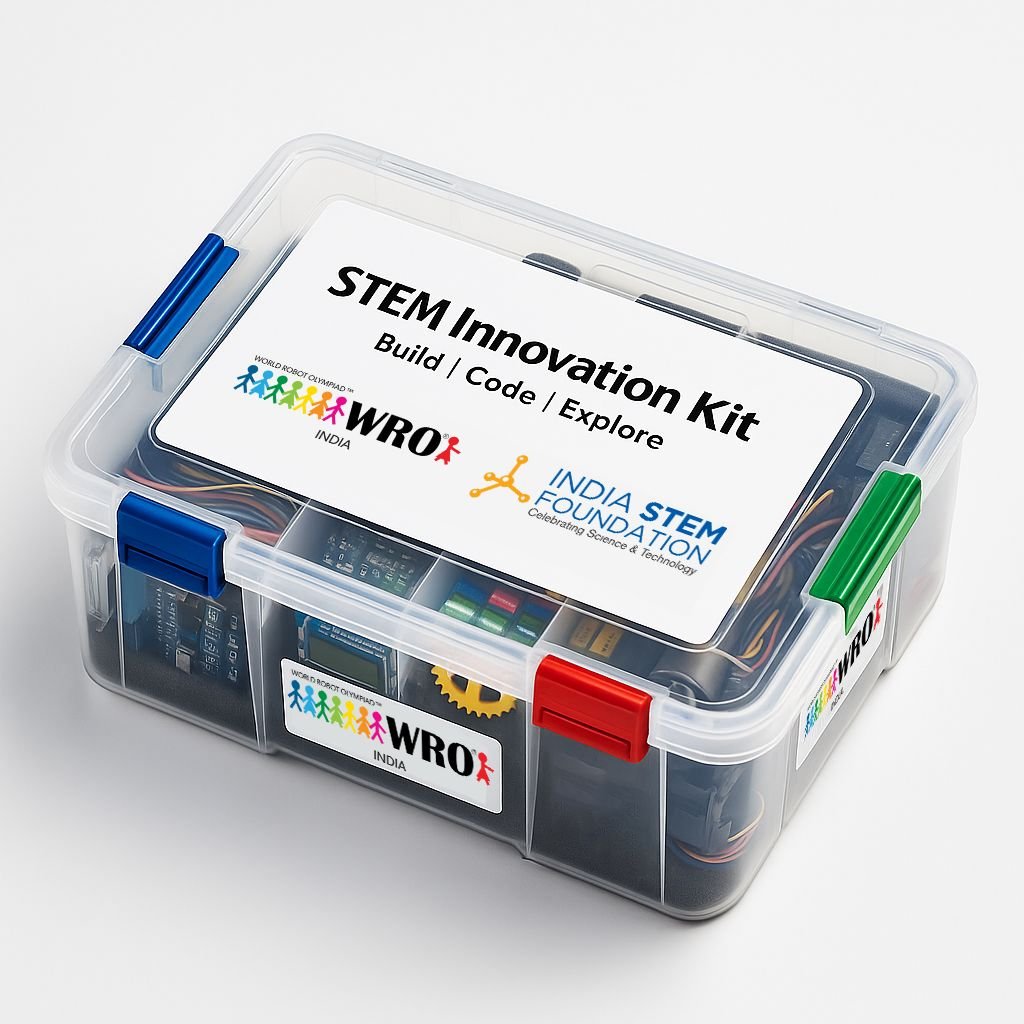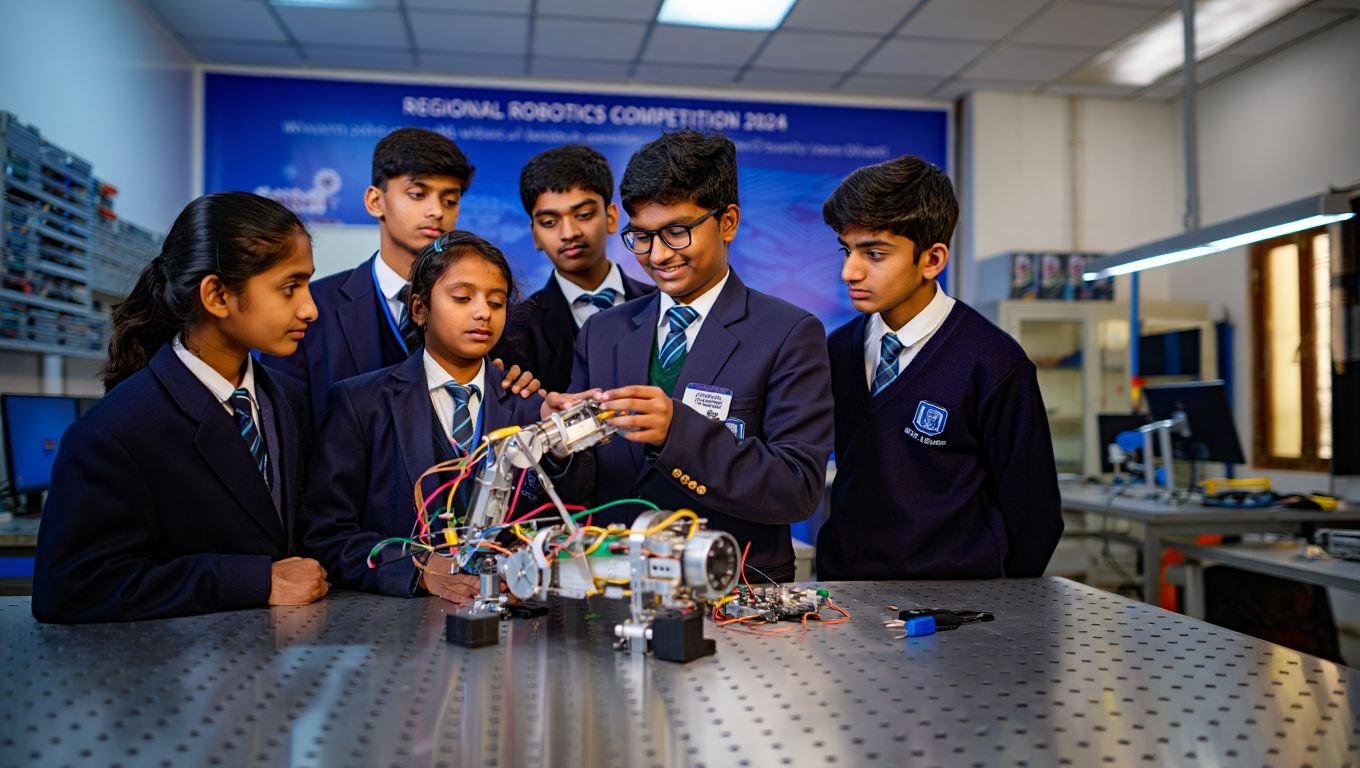STEM education offers a holistic approach to learning that equips students for the problems of the modern world by integrating Science, Technology, Engineering, and Mathematics. One of the main areas of STEM, robotics, provides practical experience in problem-solving, engineering, and programming. This combination encourages critical thinking, sparks creativity, and improves students’ comprehension of difficult subjects through real-world application. Students who work with robots acquire the technical know-how and excellent teamwork that are necessary for success in a variety of disciplines. When combined, robots and STEM education provide a vibrant learning environment that gives students the skills they need to flourish in a technologically advanced society and to innovate.
Nowadays, robotics clubs play a big role in education by giving students practical experience with technology and encouraging them to pursue careers in STEM. These extracurricular activities are vital for raising student engagement and enhancing learning outcomes, in addition to helping students develop their technical abilities. Students learn practical problem-solving, cooperation, and creative thinking via robotics clubs. This article examines how student engagement, academic achievement, and skill development are affected by robotics clubs, emphasizing the positive effects these clubs have on creating a more engaging and productive learning environment. The advantages and difficulties related to these revolutionary initiatives will be the main topics of discussion.
The Role of Robotics Clubs in Education
Robotics clubs are after-school organizations dedicated to the design, construction, and programming of robots. Students interested in robotics and STEM subjects are usually brought together by these groups to collaborate on projects, participate in robotics contests, and have hands-on learning experiences. Typical activities consist of:
Building Robots: Using a variety of tools and materials, students build robots while studying engineering, electronics, and mechanical concepts.
Programming: Using coding languages and software tools, members program robots to carry out specified tasks or react to sensors.
Contests: To showcase their inventions and problem-solving abilities, several robotics clubs take part in local, national, or worldwide contests like VEX Robotics and FIRST Robotics.
Workshops and Training: To improve members’ technical knowledge and abilities, clubs frequently provide workshops, guest lectures, and training sessions.
Teamwork: Students are encouraged to work together on projects, exchange ideas, and solve issues as a group when they participate in robotics clubs.
These groups give students great chances to put their academic knowledge to use in real-world situations, hone their technical abilities, and ignite their interest in STEM subjects.
Enhancing Student Engagement
Robotics clubs provide deep and interactive learning opportunities that greatly increase student engagement. Students actively participate in the creation and programming of robots through practical projects and contests, which stimulates a deeper interest in STEM disciplines. These groups foster an environment that piques students’ interest and motivates them to find solutions to real-world issues. Robotics projects are collaborative in nature, which promotes cooperation and communication and raises involvement even more. Robotics clubs keep students motivated and committed to their studies by letting them see the real effects of their work and take part in interesting challenges. This eventually leads to higher academic and personal progress.
Improving Learning Outcomes
Practical Learning: Students may participate in hands-on activities that make abstract STEM topics come to life through robotics clubs. Students apply what they’ve learned t in the classroom to real-world circumstances by building and programming robots, which helps reinforce their comprehension and memory of difficult concepts.
Problem-Solving Skills: Students must be able to think critically and troubleshoot issues since robotics projects need them to create answers to technological hurdles. Their ability to solve problems is improved by this process, which motivates students to consider problems from several perspectives and come up with creative solutions.
Technical Proficiency: Students gain real-world experience in coding, electronics, and mechanical design through robotics. These technical abilities help students succeed academically and lay a solid basis for careers in STEM industries, increasing their competitiveness and readiness for post-secondary education or employment.
Enhanced Collaboration: Students must collaborate to design, construct, and program robots as part of team-based robotics projects. Important abilities including communication, cooperation, and project management are fostered in this collaborative atmosphere. These abilities are critical for success in academic and professional contexts.
Enhanced Motivation: Students remain interested and motivated because robotics clubs are competitive and engaging. Engaging in stimulating projects and contests may ignite a passion for education, resulting in enhanced academic achievement and a heightened curiosity for STEM fields.
Real-World Application: Robotics clubs help close the knowledge gap between theory and real-world implementation. Students experience the immediate results of their learning when they work on concrete projects, which helps them appreciate the value of their education and motivates them to devote more time to it.
Building Confidence: Students gain confidence through competing in robotics projects and finishing them successfully. Robotics accomplishments, such as overcoming difficult obstacles or emerging victorious in contests, boost students’ enthusiasm and sense of self-efficacy, inspiring them to embark on new tasks and strive towards their academic and professional objectives.
All things considered, robotics clubs improve learning outcomes by offering a dynamic, experiential learning environment that develops technical proficiency, critical thinking, and collaboration skills while boosting student confidence and engagement.
To sum up, robotics clubs greatly improve the educational experience by offering real-world, experiential possibilities for learning in STEM subjects. Through the construction, programming, and competition of robots, these groups help students develop their technical, critical thinking, and creative abilities. Students who work on robotics projects are able to connect the dots between their academic learning and practical application, which enhances their comprehension and memorization of difficult ideas. Robotics clubs enhance the educational process by encouraging collaboration and communication. All things considered, they support higher academic success and student motivation, train students for STEM professions of the future, and spur creativity in a world of rapidly advancing technology.



